BACK

Winters End - 009 Narrow Gauge,
World War 1 Layout
It is the winter of 1917, somewhere in Northern France. Now well behind the front line a supply depot has been established in the
ruins of a farm destroyed in earlier fighting.
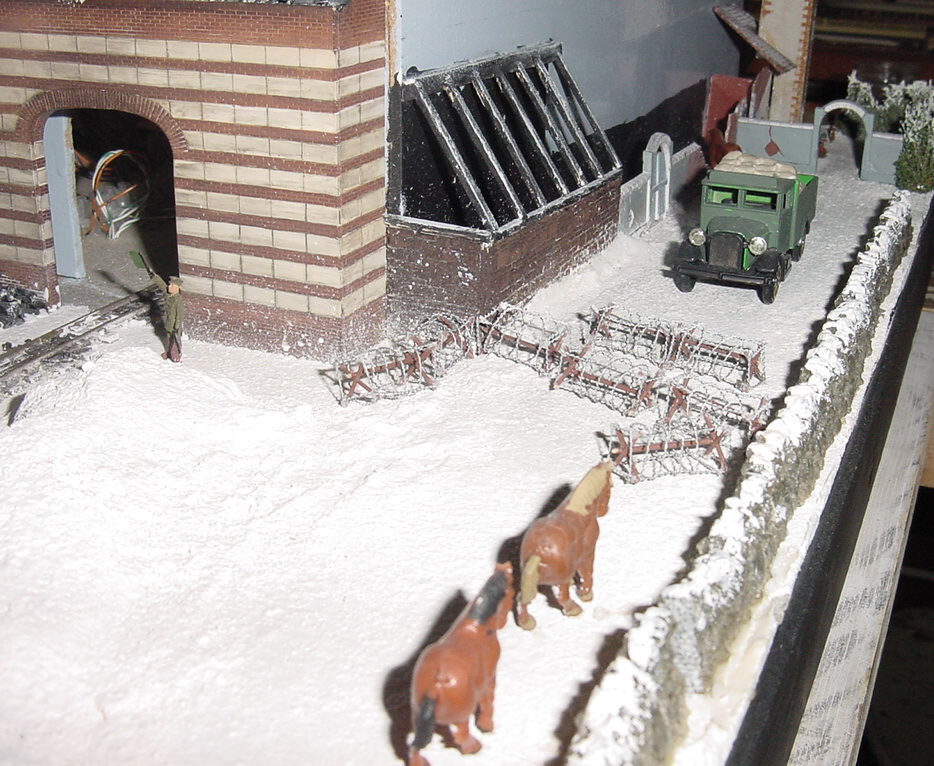
Stores and ammmunition are brought in by train; wounded soldiers are evacuated in makeshift ambulance trains. Beyond this point transport
is by horse and cart, primitive lorry or whatever is available.
Heavy snow and ice just conspire to make things worse, in the muddy conditions already created during previous battles.
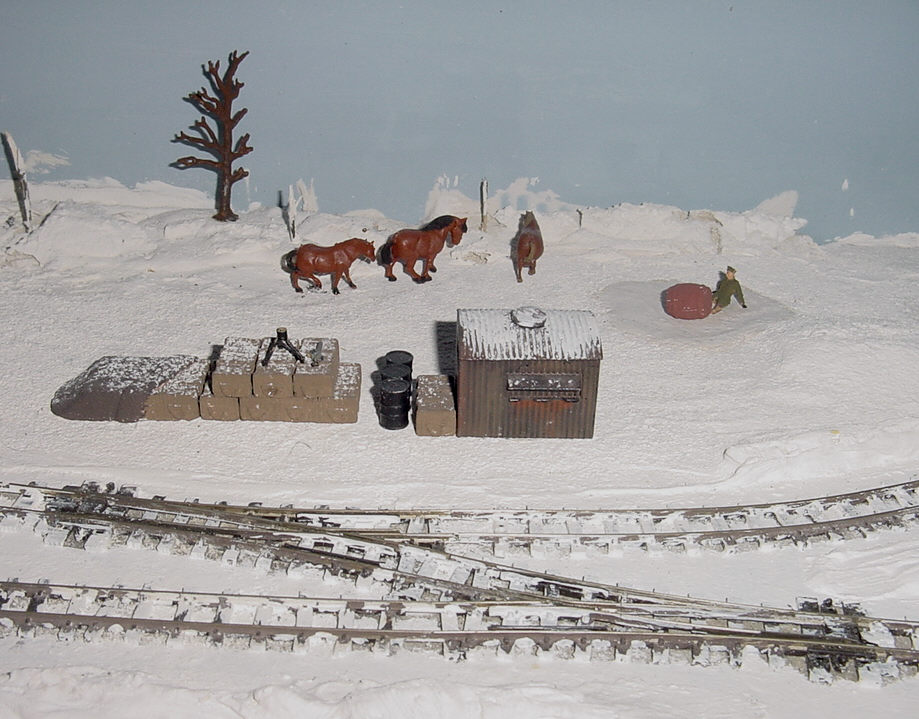
About two years ago, publication of Vol. 1 of Narrow Gauge at War sparked a significant resurgence of interest in the narrow
gauge railways used by the Allies during the First World War. With some artistic licence, many of the 009 items already available
could be adapted for use in a layout based on that period. Subsequently, the range available has expanded significantly.
One layout had already appeared in the North West, based on this scenario, so thought turned to variations on the theme, and the concept
of Winter's End was borne. A small, and incomplete, N gauge layout was doused in Polyfilla, partly to hide the inaccurate track, and partly
to test the methods of representing snow. Results were sufficiently encouraging to instigate the construction of a purpose-built layout to
test the theme to its ultimate.
Basic construction of Winter's End is unremarkable - 2"x1" frame, topped first with half inch fibre board, then 3/8" Sundela - on their own,
neither is ideal - fibre board is too soft, the 3/8 Sundela allows track pins to penetrate and hence represent a safety hazard when working
under the board. The combination, though heavy is both practical and safe.
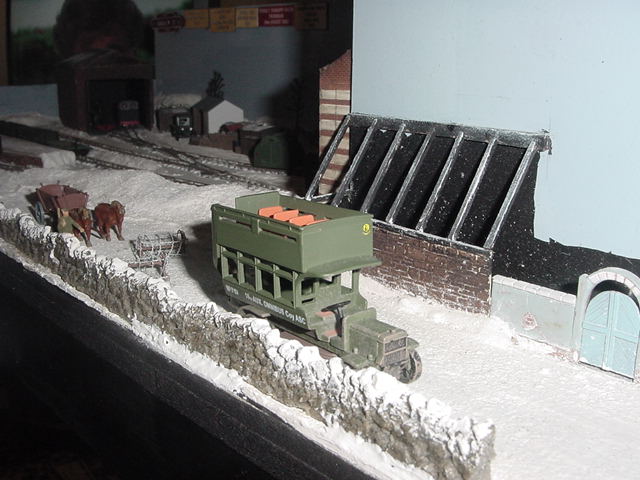
Trackwork is the ubiquitous Peco 009 - where were we before it appeared?
As yet, the points are still hand operated, but the luxury of Peco point motors looms on the horizon.
Basic scenery is again untoward: the loading platforms are card surfaces sitting on either card walls, where the faces are invisible to the
public, or Wills stone, cut from the sheets, where the view is important. Embankments and contours generally are formed from gauze soaked in
plaster, and formed to the required shape. Modroc is the proprietary version for this for those without a supply of gauze bandages or swabs.
Once in situ and dry, the basic structure was painted with textured masonry paint. Your local large DIY store will probably have "sampler" tins,
which provide a more than adequate supply for this size of layout, unless of course you have some leftovers from your own external decorating activities.
(How do you find time when there is a layout to build for the next exhibition?)
One of the photographs in Narrow Gauge at War shows a light railway emerging through the gateway of a ruined farm building - this scene was used to provide
the transition from open layout to hidden sidings. Round this portico, a further low relief structure of a shell- damaged church was created -again, typical
of rural France in the early 20th century. Detail was added in the form of freshly dug graves, and a military guard. Barbed wire is by Preiser, and much of
the stock of crates, barrels and cases are by Ten Commandments.
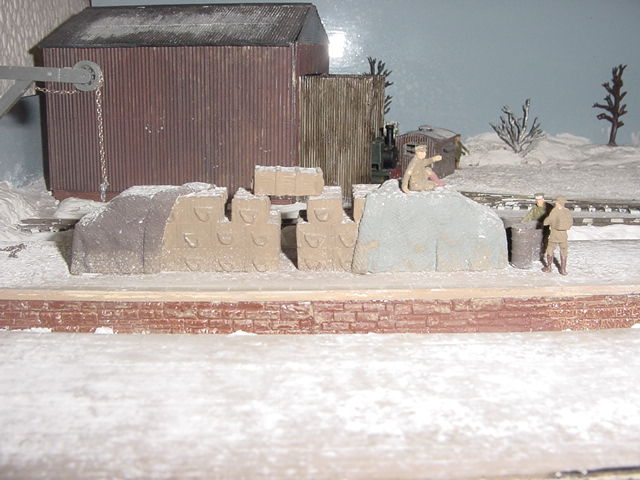
Many of the figures come from a pack of World War 1 British Infantry, made by a French firm called Hat. Poses can be altered very easily with the help of a
craft knife and a hot soldering iron - the plastic used is not amenable to the usual solvents or solvent based adhesives.
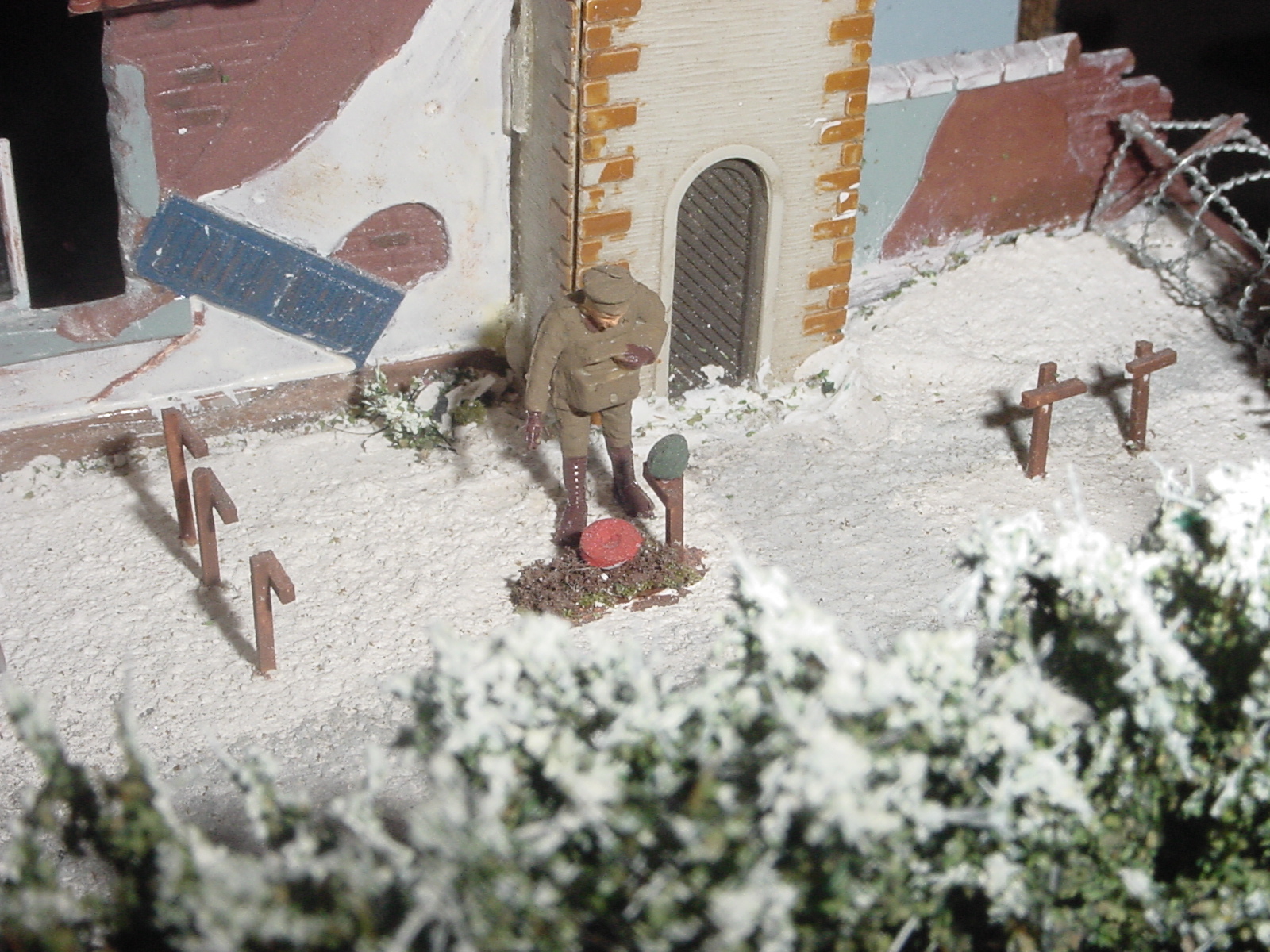
In deciding to create a layout like this, which is very specific in its time period, the availability of appropriate stock was a major
consideration.
First and foremost, the Gem Baldwin, on a Farish chassis, provided the genuine item, in readily available and reliable form.
Maquette wagons were being marketed (by Parkside, who else?). There were also drawings available to facilitate the construction of
the D type water tanks, using plasticard bodies and proprietary bogies. Chivers produce kits for the Joffre 0-6-0, the 2-6-2 Baldwin,
and of course the Hunslet 4-6-0. Which is why a sky-blue locomotive turned up on the layout at Frodsham.
It is now repainted in a more appropriate livery and awaiting lettering. The use of the Minitrains Baldwin, which also appears on the
layout is a piece of artistic licence - who says that if such a locomotive had been available, it wouldn't have ended up in France?
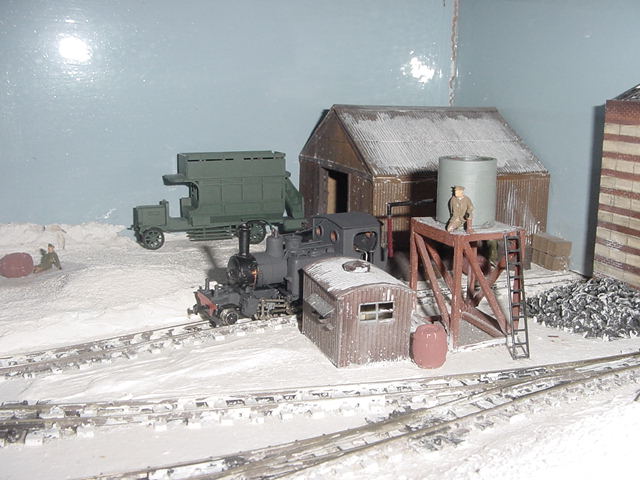
A further proprietary item which helped significantly in building the overall picture -the Corgi "For King and Country" set, which
contains a tank, a London Transport bus, plus a Fokker Triplane and a Sopwith Camel. All items which fit nicely into the period picture.
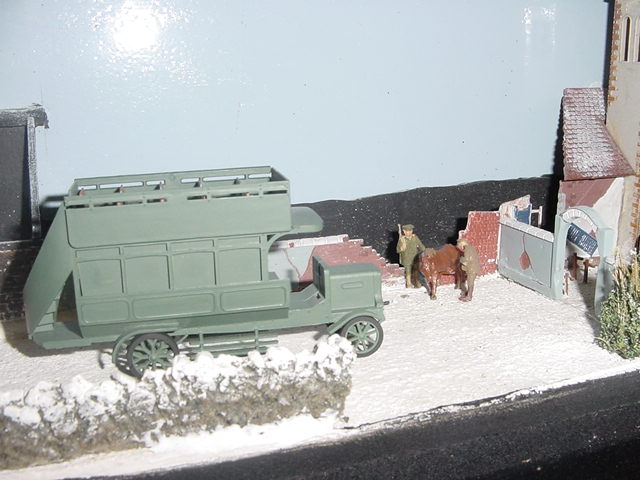
In summary, a worthwhile venture into a new field of modelling, and one where the effectiveness of the approach is clearly visible.
It may only be on a small scale - the layout is only 4ft x 18" overall, but I believe we have established the practicality of the idea.
There is talk (isn't there always?) of extensions and expansion, but we shall have to wait and see.
************








